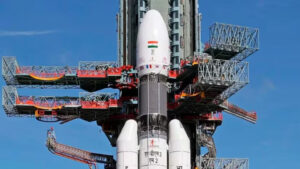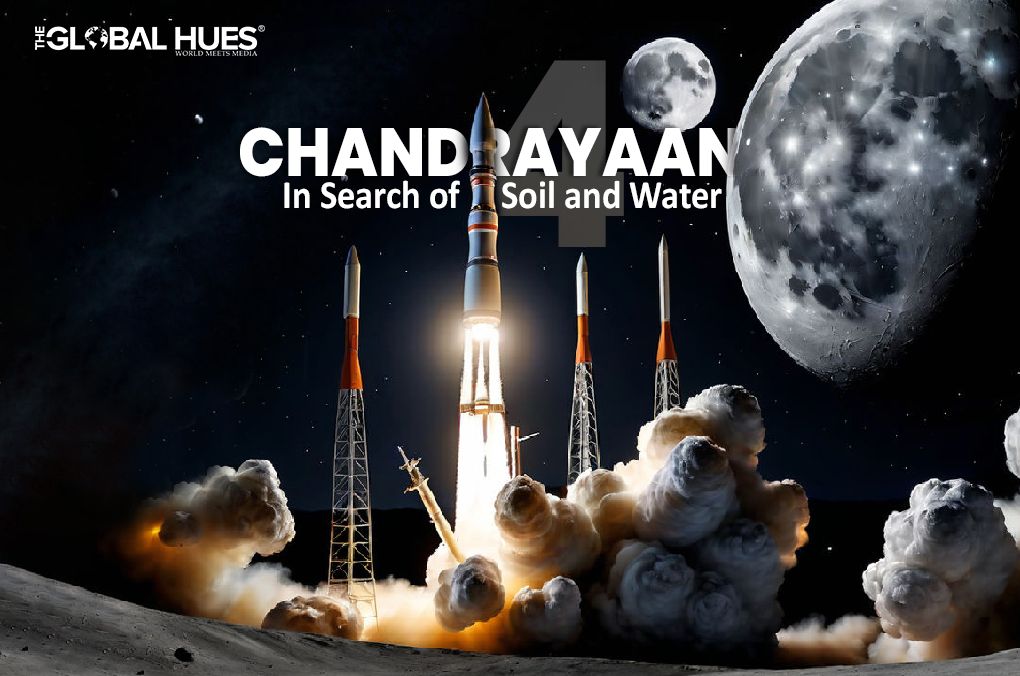While the memories of Chandrayaan 3 haven’t blurred from our minds, ISRO plans to achieve another milestone– Chandrayaan 4.
The Lunar Polar Exploration Mission (LUPEX) is named Chandrayaan-4. It is a collaboration between the Indian Space Research Organisation (ISRO) and the Japan Aerospace Exploration Agency (JAXA). The mission is supposed to launch in the year 2026 or later. The mission will send an uncrewed lunar lander or rover to explore the South Pole region of the Moon. JAXA will provide the under-development H-3 launch vehicle and the rover, while ISRO will provide the lander.
Nilesh Desai, Director of the Space Applications Centre (SAC/ISRO), mentioned, “It’s a very ambitious mission. Hopefully, in the next five to seven years, we will meet the challenge of bringing samples from the moon.”
Objective Of The Chandrayaan-4 Mission
The primary goal of the Chandrayaan-4 mission is to bring soil samples from the Moon. It is vital to find out whether the Moon has water and how this scarce resource can be utilised. Two methods are applied to find water on the surface of the Moon; these include figuring out how much water and what kind of water is available on the Moon.
Based on the current data, the quality aspect focuses on how much water is available in the projected areas. The Lunar Polar Exploration Mission (LuPEX) will set a baseline. The baseline helps us understand how much water we can use locally and how much can be brought back to Earth through future Lunar missions.
JAXA says, “Understanding how water is retained by planetary bodies is important for the prospect of future human exploration beyond the Earth.”
Also Read: India’s Space Sector: On Track To A $100 Billion Industry By 2040
The mission will last for six months and focus on the sunlit region of the Moon’s south pole. Through this mission, JAXA will investigate the feasibility of ice as rocket fuel, hence making water a crucial point in the mission. Chandrayaan’s rover will have a drill that will probe lunar rocks. It will heat the lunar rock material and measure changes in the rock while identifying the volatiles found in the rock.
To achieve these goals, LuPEX will deploy a cutting-edge spacecraft containing thin-film solar cells and ultra-high-energy-density batteries. It ensures uninterrupted power supply during lunar night or in the shadowed parts of the Moon. This technology is critical for the rover’s survival in extreme lunar conditions.
LuPEX aspires to advance the technology required for surface exploration on low-gravity celestial bodies. It includes mobility solutions, and perfecting lunar night survival mechanisms. The mission focuses on the development of excavation techniques for potential mining operations. These technological advancements support future lunar activities and have implications for future Mars missions.
Also Read: Future Missions of ISRO
Specifications Of Chandrayaan-4

Chandrayaan-4 will be much more complex than Chandrayaan-3. The Chandrayaan-4 plans to land a rover weighing almost 350 kg, much more than the Chandrayaan-3 rover, which was a mere 30 kg. The rover explores a larger area of about 1000m x 1000m, and the mission’s success depends on the ability to bring back lunar samples from the moon.
Bringing The Soil Sample From The Moon
Known as the Lunar Sample Return Mission (LSRM), Chandrayaan 4 aims to bring back soil samples from the moon. The collection point of these samples will be the shiv-shakti point on the lunar surface. The interesting thing to note here would be that the previous three missions had studied the soil sample on the Moon. However, in the Chandrayaan-4 mission, soil samples will come back to Earth. The re-entry module will bring back the rock and soil sample from the Lunar surface.
LuPEX mission will be more complex than its predecessor. After ISRO faced communication difficulties with the Chandrayaan-3 mission’s Vikram lander and Pragyan rover, the eyes set towards Chandrayaan 4 mission.



